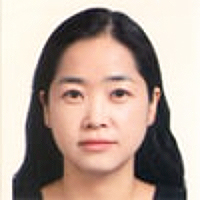A surgical procedure for re-implanting a tooth that has been rendered hopeless because of periodontitis: a case report
Published on: 7th October, 2022
Aim and methodology: This article describes a periodontally compromised, hopeless incisor tooth that was purposefully replanted, along with the results after six months. This entails the deliberate removal of the tooth and its subsequent correct manipulation and endodontic restoration before reinserting it into the socket.Results: Hopeless lower incisors with periodontal involvement were transplanted utilizing an implant surgical drilling approach after receiving root canal therapy and tetracycline-HCI conditioning. Bone graft material was added and the procedure was monitored for six months. The tooth was observed to be asymptomatic, functioning normally, and showing no pathologic radiological changes. With minimal bleeding during probing and no growth of pathological pockets, the periodontal condition was within normal limits. Alveolar bone support was seen to be adequate. The results may suggest that, in some circumstances, purposeful replantation is a viable strategy of treatment for maintaining native dentition.Conclusion: Intentional tooth reimplantation can be an alternative treatment option for periodontally involved teeth with poor or hopeless prognoses.
Assessment and treatment of patients with kinesiophobia: A Delphi consensus
Published on: 26th October, 2022
Kinesiophobia is described as pain-related fear of movement and plays a role in the development of chronic musculoskeletal pain. Several approaches have been described in the literature, but there does not seem to be a consensus on the most appropriate way to evaluate and treat patients with kinesiophobia. The aim of this study was to identify clinically relevant assessments and treatments recommended by a consensus of experts. Fourteen experts were identified to participate in a three-round internet-based Delphi study. Participants were asked to propose assessments and treatments (round 1), to grade each proposal on a Likert scale of 9 (round 2), and to reassess their level of agreement (round 3). The consensus was defined with 75% agreement. Five methods of assessment and six treatment approaches reached a consensus. The TAMPA scale reached the top position as an assessment of kinesiophobia. Graded exposure to movement, cognitive and behavioral therapy, and pain neuroscience education were the highest-rated interventions. These results provide the first expert consensus on preferred assessments and treatments for patients with kinesiophobia and correspond with the evidence base in the literature.
Using Model Classification to detect Bias in Hospital Triaging
Published on: 12th June, 2023
Background: In light of the COVID-19 pandemic and the health crisis left in its wake, our goal is to develop extensive machine-learning techniques to provide a clear picture of the treatment, and possible mistreatment, of specific patient demographics during hospital triaging.Objective: We aim to reveal whether a patient’s treatment and hospital disposition is related to the following attributes - Emergency Severity Index (ESI), gender, employment status, insurance status, race, or ethnicity which our 100 MB dataset included.Materials and methods: Our work is separated into two parts - the classification task and data analysis. As part of the classification task, we used the k-Nearest-Neighbor classifier, the F1-score, and a random forest. We then analyze the data using SHapley Additive exPlanations (SHAP) values to determine the importance of each attribute.Results: Our findings show that significance varies for each attribute. Notably, we found that patients with private insurance programs receive better treatment compared to patients with federal-run healthcare programs (e.g. Medicaid, Medicare). Furthermore, a patient’s ethnicity has a greater impact on treatment for patients under 40 years of age for any given ESI level. Surprisingly, our findings show language is not a barrier during treatment.Discussion and conclusion: We, therefore, conclude that although hospitals may not be doing so intentionally, there is a systemic bias in hospital triaging for specific patient demographics. For future works, we hope to aggregate additional patient data from hospitals to find whether specific demographics of patients receive better healthcare in different parts of the United States.
European Clinical Laboratory, Molecular and Pathological (ECMP) criteria for prefibrotic JAK2V617F-Thrombocythemia and Polycythemia Vera versus MPL515- and CALR-Thrombocythemia and Myelofibrosis: From Dameshek to Michiels 1950-2018
Published on: 1st March, 2019
OCLC Number/Unique Identifier: 8056299472
The broad spectrum of heterozygous versus homozygous JAK2V617F mutated MPN consists ET, ET with early features of PV (prodromal PV), classical PV, masked PV, advanced PV and post-PV myelofibrosis. Combined use of bone marrow histology and increased erythrocyte counts above 5.8x1012/L can replace increased red cell mass at time of presentation as the pathognomonic clue for the correct diagnosis of hetero/homozygous or homozygous mutated PV. Erythrocyte counts are in the normal range below 5.8x1012/L in heterozygous JAK2V617F mutated ET and prodromal PV but above 5.8x1012/L in heterozygous-homozygous or homozygous mutated PV. The bone marrow cellularity and morphology in pre-fibrotic ET, prodromal PV and PV carrying the JAK2V617F mutation are overlapping showing clustered increase of large mature pleomorphic megakaryocytes (M) with no increase of cellularity (<60%) in ET. The bone marrow is hypercellular (60%-80%) due to increased erythropoiesis megakaryopoiesis (EM) in prodromal and classical PV and trilinear hypercellular (80%-100% due increased megakaryopoiesis, erythropoiesis and granulopoiesis (EMG) in advanced PV and masked PV. Bone marrow cellularity ranging from normal (<60%) in ET to increased erythropoiesis (EM) in prodromal PV to hypercellular (80-100%) in advanced PV and masked PV largely depends on increasing JAK2V617F mutation load from low to high on top of other biological MPN variables like constitutional symptoms during long-term follow-up. MPL515 mutated ET is featured by an increase of clustered small and giant megakaryocytes with hyper-lobulated staghorn-like nuclei in a normal cellular bone marrow. The third entity of pronounced JAK2/MPL wild type ET associated with primary megakaryocytic granulocytic myeloproliferation (PMGM) without PV features proved to be caused by calreticulin (CALR) mutation. CALR mutated thrombocythemia is characterized by dual proliferation of megakaryocytic and granulocytic bone marrow proliferation of dense clustered large to giant immature dysmorphic megakaryocytes with bulky (bulbous) hyperchromatic nuclei, which are not seen in MPL515-mutated Thrombocythemia and JAK2V617F-Thrombocythemia, prodromal PV and classical PV.
SARS-CoV-2, the emperor’s new clothes and medical tyranny
Published on: 10th March, 2022
SARS-CoV-2 revisits a children’s fairy tale, the Emperor’s New Clothes. The swindler- salesmen are Biden, Fauci, et al. The magical clothes are their deliberate “pandemic of fear,” and the duped emperor is the American public.Extensive evidence is presented here of a great scam. The data details the true and low health risks of SARS-CoV-2; viral biology of natural immunity and the immune response from experimental mRNA gene therapy; side effects of the “jab;” and the draconian consequences of federal mandates. Differences between official pronouncements and scientific data are highlighted.The goal of the SARS-CoV-2 Big Con or scam is the nullification of the U.S. Bill of Rights in order to restore tyranny over the American public. We the People can fight for freedom with ballots and dollars.
Evaluation of pulp and paper-making potential of Acacia melanoxylon based on chemical composition grown at Chencha, Ethiopia
Published on: 23rd November, 2022
The study aimed to examine the chemical composition of Acacia melanoxylon wood as a potential raw material for pulp and paper manufacturing. Samples of Acacia melanoxylon were taken systematically based on tree height at the bottom (10%), middle (50%), and top (90%) of market height. The sample was sorted, dried, milled, and sieved, and all chemical compositions were determined by the standards outlined in ASTM except cellulose and hemicellulose, which were determined by the Kurschner-Hoffer and alkali extraction methods, respectively. The results of the study showed that the overall average values of chemical composition along tree height levels were 45.02%, 21.94%, 23.79%, 5.52%, 3.24% and 0.48% for cellulose, hemicellulose, Klason lignin, hot-water solubility, alcohol-benzene extracts, and ash content, respectively. Except for hot-water extractives, the chemical composition of the bottom and top portions differed significantly. Generally, this study suggests that the chemical composition of Acacia melanoxylon wood is well suited for pulp and paper production.
Sea Level Rise Impacts in Coastal Areas and Possible Mitigation Engineering Approaches
Published on: 21st July, 2023
Coastal areas are subjected to both natural and man-made actions, leading to a deterioration of coastal structures. Climate change has had a heavy impact on these areas in recent years. An important consequence of these actions is sea level rise. This phenomenon is the most important cause of coastal erosion, a serious problem with ecological, economic, and human health consequences. The countermeasures to contrast this phenomenon and the degradation of the entire coastal system, are represented by engineering interventions. These basically consist of approaches for adaptation to sea level rise, namely protection, retreat, and accommodation. Variations and site adaptation of these actions can involve procedures of no intervention; advancement; protection; retreat; accommodation; and ecosystem-based adaptation. While these procedures have provided coastal benefits and protection, in the long run, they may cause further coastal disruption and further aggravate the situation. Such interventions, therefore, require an accurate assessment of the advantages and disadvantages. However, it is certainly necessary to proceed with actions aimed at mitigating climate change, respecting the rules in a sustainable way.
A Comparative Study of Metoprolol and Amlodipine on Mortality, Disability and Complication in Acute Stroke
Published on: 4th April, 2025
Stress in acute stroke may increase mortality and complications, but there is a paucity of information on the efficacy of beta blockers over other anti-hypertensive. To report efficacy of metoprolol over amlodipine in reducing mortality, disability and infections in acute stroke. CT/MRI confirmed stroke patients within 3 days of onset were included whose age was 18 to 75 years. Patients with secondary intracerebral hemorrhage, organ failure, pregnancy, malignancy, and immunosuppressant or on beta-blocker/amlodipine were excluded. Stroke risk factors, Glasgow Coma Scale (GCS) score, National Institute of Health Stroke Scale (NIHSS) score and CT/MRI findings were noted. Patients with a blood pressure of > 160/90 mm of Hg were randomized using 1:1 randomization to metoprolol (25 mg on day 1, 50 mg if BP is not controlled) or amlodipine (2.5 mg on day 1, then 5 mg then 10 mg on, subsequent days if BP is not controlled). Other standard treatment was continued. The primary outcome was mortality at 1 month; secondary outcomes included were in-hospital gastrointestinal hemorrhage, pneumonia, sepsis and 3 months functional outcome based on modified Rankin Scale (mRS). Side effects were noted. 18 (14.4%) patients died; 6 (9.7%) in metoprolol and 12 (19%) in amlodipine (p = 0.20) group. At 3-months, 66 patients had good outcome; 45 (80.4%) in metoprolol and 21 (43.3%) in amlodipine group (p < 0.001). The other secondary outcomes were comparable between the two groups. Metoprolol was withdrawn in 6 patients due to bradycardia, and amlodipine in 5 due to hypotension and in 1 due to allergic reaction. Metoprolol is associated with improved functional outcomes in acute stroke compared to amlodipine.
Hypertensive toxicity of thyrosine kinase inhibitors; Friend or Foe?
Published on: 12th January, 2021
OCLC Number/Unique Identifier: 8899339890
Tyrosine kinase inhibitors (TKIs) are widely used in Oncology practice. Hypertension may develop during cancer treatment and TKIs are well known drugs that are associated with drug related hypertensive toxicity. TKI related hypertensive toxicity is not always the indicator of worse clinical outcomes and it may be the sign of treatment efficacy.
Biomarkers for High Metabolic Burden in Neurologic Disease
Published on: 15th February, 2024
Neurologic diseases are recognized to have multifactorial origins well beyond mere genetic predisposition. Nutritional burdens have been identified to contribute to neurodegeneration. Healthy diets are becoming increasingly appreciated to potentially play key roles in both the developing and developed world of reducing incidences of neurologic diseases, while unhealthy diets are acknowledged to be contributing to their rise.




